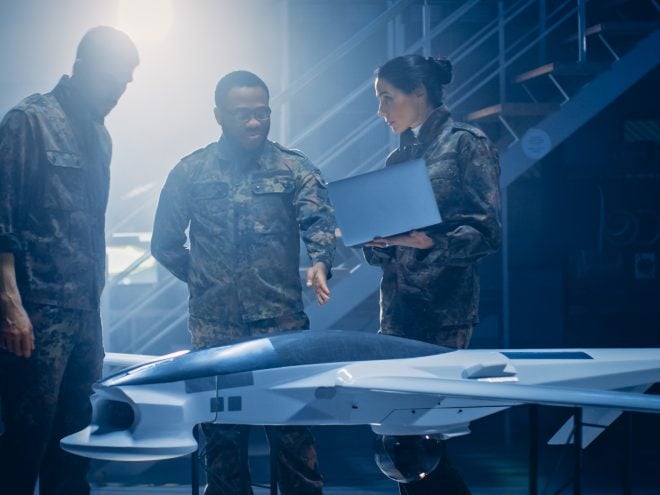Introduction
In today’s uncertain geopolitical environment, defence readiness has become a top priority for nations around the world. The ongoing conflict in Eastern Europe and rising tensions in the Asia-Pacific have only reinforced the need for modern, well-equipped military forces. Australia is no exception.
In response, Australia is undergoing a significant expansion of its defence capabilities—backed by record-breaking investment, a modernisation mandate, and a strong appetite for advanced equipment and partnerships. For international defence exporters, especially those with existing U.S. Department of Defense relationships, Australia presents a well-aligned, high-potential market.
A Surge in Defence Spending
Australia’s 2022–23 Federal Budget reconfirmed the government’s long-term commitment to defence modernisation. The country allocated A$48.6 billion (US$36.4 billion) for the year, representing a 7.4% increase over 2021–22. More notably, the total defence spend projected for the next decade exceeds A$575 billion (US$431 billion)—a bold declaration of Australia’s intent to become a regionally superior defence power.
This funding spans all domains: land, air, sea, cyber, and space.
Naval and Maritime Priorities
As an island nation with vast maritime borders, Australia’s naval strategy is a critical pillar of its defence posture. Current maritime investments include:
A$10 billion (US$7.5 billion) for a new east-coast submarine base
A$4.3 billion (US$3.2 billion) to build Western Australia’s first large-vessel dry berth at Henderson Shipyard
Major expansion of the Osborne Shipyard in South Australia to support the SSN (nuclear-powered submarine) program
These projects create opportunities for suppliers of submarine systems, shipbuilding technologies, surveillance tools, underwater robotics, and vessel integration platforms.
Land and Air Defence Modernisation
Australia is also modernising its land and air capabilities. This includes:
A$38 billion (US$28.5 billion) to grow the ADF workforce by 18,500 personnel
Investments in Chinook helicopters, Abrams tanks, uncrewed surveillance systems, combat vehicles, and training programs
Extended support for the Hawk 127 Lead-In Fighter Training System
For defence contractors offering hardware, integration systems, aviation equipment, and autonomous platforms, this scale of investment is a green light for commercial engagement.
Cybersecurity and Digital Warfare
As the battlefield extends into cyberspace, Australia is also bolstering its cyber defence infrastructure. The Australian Signals Directorate (ASD) will receive A$9.9 billion (US$7.4 billion) over the next decade to protect critical infrastructure and national assets from cyber threats.
Exporters offering cybersecurity solutions, digital defence platforms, AI-powered threat detection, or training and simulation platforms can find strong demand within both government and defence sectors.
Why Exporters Should Pay Attention
Australia has a long-standing history of procuring U.S. defence equipment and services. In a typical four-year cycle, Australia spends upwards of A$10 billion (US$7.5 billion) on U.S.-origin arms and contracts—most commonly in weapons, IT systems, and engineering services. Given today’s climate, this number is likely to increase.
Exporters already supplying the U.S. Department of Defense, or those aligned with NATO and Five Eyes partners, are particularly well positioned to succeed in Australia due to interoperability requirements and shared security protocols.
Where the Opportunities Lie
Firms offering the following will find opportunities across the Australian defence landscape:
Modern weapons and surveillance systems
Industrial-scale components for aircraft, tanks, and uncrewed platforms
Naval and submarine systems and integration tools
AI-enabled decision support and battlefield technologies
Defence simulation, training, and education platforms
Moreover, as the ADF expands its personnel and capabilities, training and workforce development providers—including VR/AR trainers, leadership programs, and technical skills platforms—will find growing demand.
Conclusion
Australia’s defence transformation is not just a government priority—it’s a national mission. With billions in confirmed funding, bipartisan political support, and a clear focus on capability building, the market is open for international defence suppliers who can bring trusted, proven, and innovative solutions.
Foley supports U.S. and global defence firms looking to enter or expand in Australia through market research, partner identification, and tailored trade mission support.
To explore defence sector opportunities in Australia, don’t hesitate to reach out.

